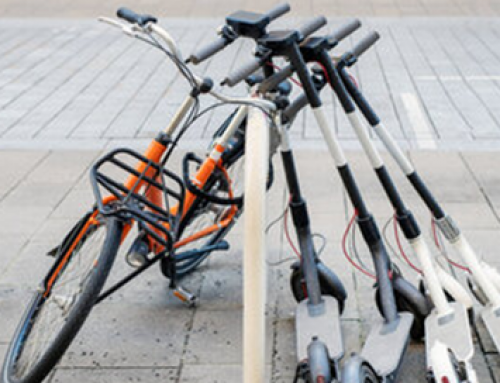
Every year, the Environmental Protection Agency releases a report detailing solid waste generation, greenhouse gas emissions and landfilling across the U.S., and paper waste in schools and the public sector has been a key concern. In 2018, the most recent year for which complete data is available, paper products comprised the largest proportion of municipal waste at over 23 percent.
However, the EPA saw a decline in paper waste from 87.7 million tons in 2000 to 67.4 million tons in 2018 as work increasingly moved online. Whether institutions were recycling paper or avoiding it altogether by going digital, paper waste has been cut drastically over the past decade. Now ed tech experts say the massive virtual shift that occurred as a result of coronavirus school closures could help schools reduce their carbon footprint even further.
“The generation of office-type [high-grade] papers also has been in decline, due at least partially to activities such as the increased use of the electronic transmission of reports,†EPA spokesperson Nick Conger said in an email to Government Technology.
“In 2018, paper and paperboard recycling, at about 46 million tons, resulted in a reduction of more than 155 million metric tons of carbon dioxide equivalent,†Conger said. “Contextually, this reduction is equal to avoiding the emissions from more than 33 million cars for one year.â€
Education officials expect a growing demand for online learning options after the pandemic, feeding into the continued digitization of education. Market analysts from the technology research firm Metaari have also made note of this demand, projecting that the online education market is poised to reach up to $350 billion by 2025.
Anisa Heming, director of the nonprofit Center for Green Schools in Washington, D.C., noted that while virtual learning isn’t always a viable option for all students, ed tech may have a role to play in making schools more eco-friendly. Heming said public schools represent “a large proportion of a community’s environmental impact†through things like transportation, food and paper waste.
“Ed tech has already helped schools waste less paper over the last several years, significantly cutting down on the amount of material disposed of in classrooms,†she said. “I think virtual learning can cut down on transportation impacts from students traveling for specialized classes, or classes that only one school in a school district has the capacity to offer, which has both educational and environmental benefits.
“Districts have reported to us that one of their biggest sources of waste nowadays is food from the cafeteria,†she added. “Food waste is particularly concerning because the production and transport of food is so environmentally taxing. The good news is that it’s a waste stream that can be cut significantly with careful monitoring, purchasing decisions and storage solutions, all of which can be improved through the use of software and tech tools.â€
School buses travel about 4 billion miles each year for more than 25 million in-person students every day. Many of those buses are outdated and continue to emit harmful diesel emissions. Bus routing software, online carpool organizing and electric buses could help reduce transportation emissions. Heming said the center is hopeful the technology will become more accessible in the coming years.
Sustainable Jersey for Schools, a certification program that recognizes and awards grants to schools in New Jersey seeking to “go green,†has worked to promote a culture of sustainability in nearly 1,000 schools by tracking various metrics such as ecologically mindful implementation and disposal of ed tech tools.
The program introduced its Digital Device Life Cycle Management initiative last month to encourage the use of energy-efficient tech tools and proper disposal to cut harmful “e-waste†in landfills. By being conscious of this and using technology to track waste, they say schools can work to become more eco-friendly.
“In terms of actual educational technology, remote and digital learning has become the new norm for our pandemic society currently, and the savings for the environment are huge,†said Laurence Cocco, who leads the organization’s Digital Schools Star Recognition Program.
The world of higher education has been considering how the appropriate use of technology could play into sustainability goals. Like other higher ed institutions, East Tennessee State University already offered a plethora of virtual asynchronous learning options before the pandemic forced most classes online. The university’s CIO, Myra Jones, said last year’s virtual overhaul was a chance for faculty and university officials to think more about how ed tech can help make learning more flexible, and thus more energy efficient.
“I think online learning, more so than just ‘remote learning,’ is probably having the effect of reducing our footprint,†Jones said. “It’s built with intention so that most of the resources are contained within the [online] course.â€
Through online content and the increased use of e-books, students can save money on textbooks and use less paper in the process. The recent increase in virtual learning also allowed the university to invite more expert speakers to engage with students, all without the need for long drives or flights to and from brick-and-mortar lecture halls.
“You can bring an expert from anywhere. There are no costs and there’s no carbon footprint. You open Zoom, and there’s your expert from London in your classroom,†she said. “They don’t have to get on a plane and schedule a day away. They go in their office and just turn on their computer.â€
Commuters and students juggling other responsibilities often preferred options aside from traditional pen-and-paper courses before the pandemic. For those students, Jones said, the virtual shift was a welcomed change that provided viable alternatives to in-person learning. Jones expects demand for online higher ed options to grow in the years to come.
“It’s for sure made a huge difference in the [number of] people who want to go fully online,†she said.


Leave A Comment